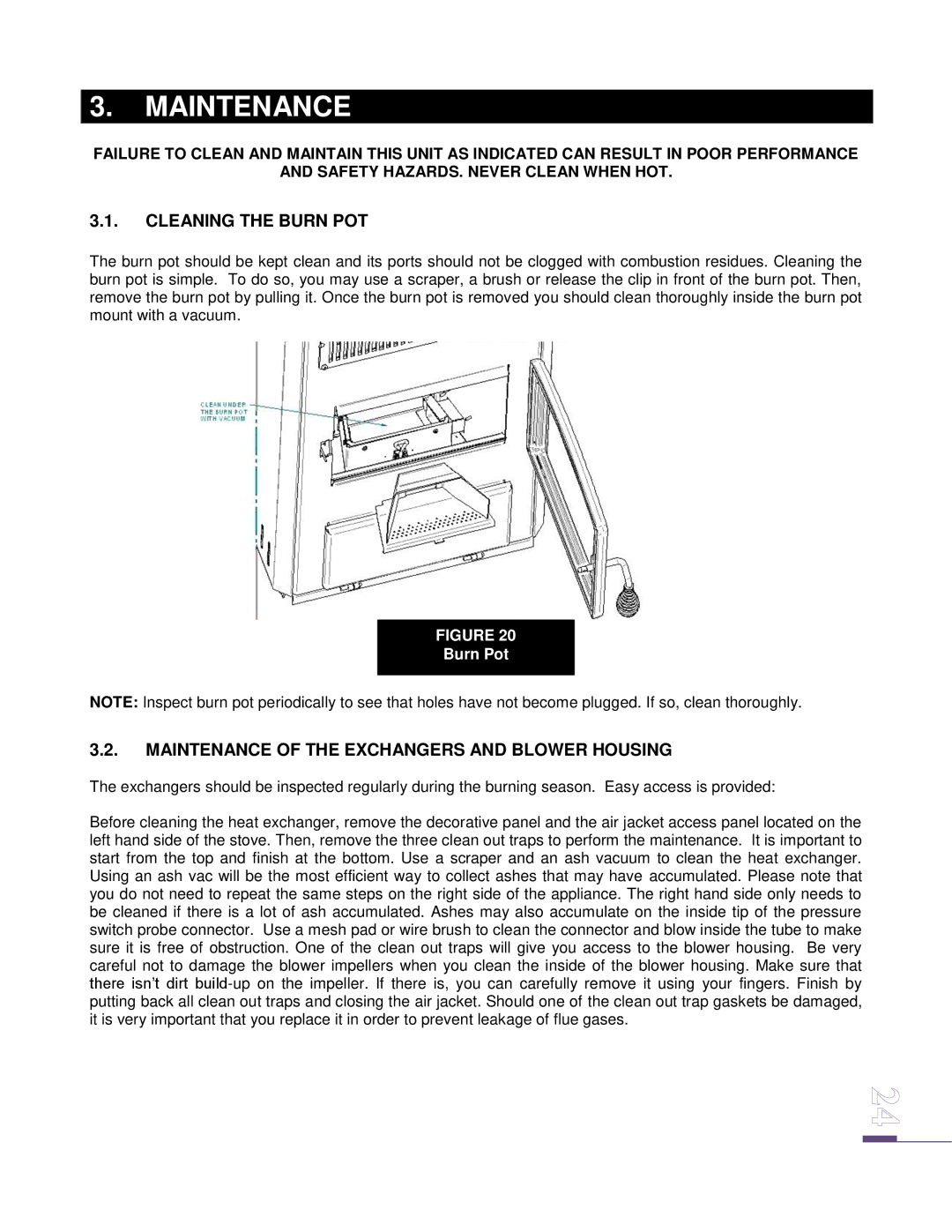ECO-65 specifications
The Drolet ECO-65 is a highly efficient wood stove designed to deliver exceptional heating performance while adhering to strict environmental standards. Known for its robust construction and innovative technology, the ECO-65 represents a significant advancement in clean-burning wood heating solutions.One of the standout features of the Drolet ECO-65 is its impressive heating capacity. This stove can produce up to 65,000 BTUs, making it suitable for heating spaces up to 2,000 square feet. With this level of output, the ECO-65 is ideal for both residential and larger commercial applications, offering a reliable and economical alternative to traditional heating methods.
The ECO-65 incorporates advanced secondary combustion technology, which maximizes efficiency and minimizes emissions. This system works by igniting the gases produced during wood combustion, allowing for a more complete burn. As a result, less particulate matter is released into the atmosphere, making it an environmentally friendly option. This adherence to eco-friendly practices is further emphasized by the stove’s EPA certification, reflecting its compliance with rigorous air quality standards.
Another notable characteristic of the ECO-65 is its high-efficiency rating, boasting an efficiency level of approximately 78%. This means that a larger portion of the energy contained in the wood is converted into usable heat, reducing fuel consumption and the frequency of refueling. This efficiency is beneficial not only for the environment but also for homeowners looking to decrease heating costs.
In construction, the ECO-65 is built with high-quality materials, featuring a heavy-duty cast iron door and a durable steel body. These materials not only contribute to a longer lifespan but also enhance the stove's ability to retain and radiate heat. The large viewing window provides an inviting ambiance, allowing users to enjoy the beautiful flames while also benefiting from the warmth produced.
The stove also includes a convenient ash pan, making it easier to maintain and clean, ensuring that users can spend less time on upkeep and more time enjoying the comfort it provides. With a simple, intuitive design and adjustable air controls, the Drolet ECO-65 allows homeowners to effortlessly manage their heating needs.
In summary, the Drolet ECO-65 is a premier choice for those seeking an efficient and environmentally responsible wood stove. Its powerful heating capability, advanced combustion technology, and robust build quality make it one of the top contenders in the wood stove market today.

